The industrial past around the river Usk Newport
This is a labour of love cycle ride, and makes a good short flat route so easy a young family can do it. I've travelled far and wide to observe Industrial relics in the UK, but where I live has some interesting history and if you know where to look, you can still see the ghosts of the past. Our precinct has changed so much, there's a danger people will believe tall ships, steam engines, railway lines criss-crossing everywhere- never existed in Newport. There was a time when Newport's riverside was a hive of activity.
Step 1- West of the river Usk
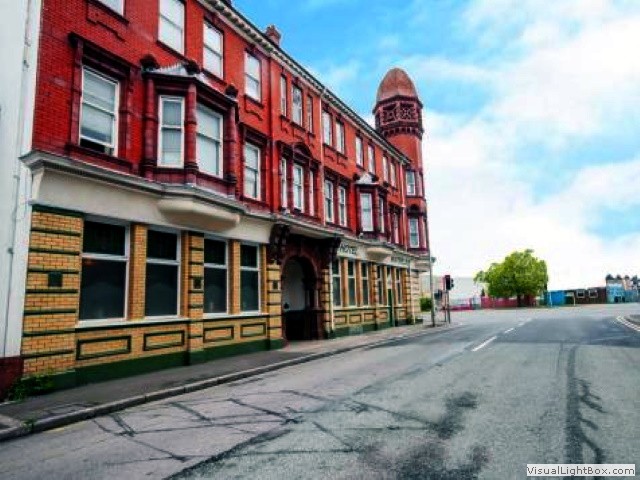 Starting from the Waterloo hotel built in the 1870's, a former docks pub (and brothel) now grade II listed. The Waterloo Hotel once boasted it had the longest bar in the Uk, thankfully the pub was saved from the wrecking ball, it is now a superb preserved example of an Edwardian pub. Next we move over the road to the transporter bridge staying on the west bank of the river Usk. William Royse Lysaght was enticed to build a steel plant on the east bank of the Usk in 1906, the problem was- the established community (and therefore the workers) were on the west bank of the River Usk in Pillgwenlli. It was five miles around crossing the nearest river bridge (and that route passed fourteen pubs, tongue in-cheek or fact, the directors of Lysaght's feared the men would be drunk before they started work). So a river crossing near the factory was needed, it couldn't be a standard road bridge as tall ships still used the river. So a moving gondola type bridge was agreed upon. Sticking to the footpath all the way to the Southern Distributor Road bridge (SDR), there were at least eight wharfs, now only rotten timber sticking out of the mud. We come to the lock of the old Newport Docks, facing North east along the line of Usk Way and to the left is the grade I listed Baltic Oil Works built in the Mid 19th century as a warehouse. The building was occupied by Morris and Dibble, oil, and grease merchants which was later called the Baltic Oil Works.
Starting from the Waterloo hotel built in the 1870's, a former docks pub (and brothel) now grade II listed. The Waterloo Hotel once boasted it had the longest bar in the Uk, thankfully the pub was saved from the wrecking ball, it is now a superb preserved example of an Edwardian pub. Next we move over the road to the transporter bridge staying on the west bank of the river Usk. William Royse Lysaght was enticed to build a steel plant on the east bank of the Usk in 1906, the problem was- the established community (and therefore the workers) were on the west bank of the River Usk in Pillgwenlli. It was five miles around crossing the nearest river bridge (and that route passed fourteen pubs, tongue in-cheek or fact, the directors of Lysaght's feared the men would be drunk before they started work). So a river crossing near the factory was needed, it couldn't be a standard road bridge as tall ships still used the river. So a moving gondola type bridge was agreed upon. Sticking to the footpath all the way to the Southern Distributor Road bridge (SDR), there were at least eight wharfs, now only rotten timber sticking out of the mud. We come to the lock of the old Newport Docks, facing North east along the line of Usk Way and to the left is the grade I listed Baltic Oil Works built in the Mid 19th century as a warehouse. The building was occupied by Morris and Dibble, oil, and grease merchants which was later called the Baltic Oil Works.
Crossing the old dock entrance and hugging the riverside you can see the other listed (and derelict) building- the Malthouse, constructed in 1898 formerly the premises of Phillip and Sons, Malsters, who operated a brewery in nearby Lower Dock Street. If you turn to face the river you will see Lysaghts steel works jetty (built during the steel strike of 1980). Just under the SDR was the Cambrian Iron & Pipe foundry which was taken over by 'Black Clawson works', incidentally I was sponsored by Black Clawson's in the mid eighties. The area was riddled with the 'Newport and South Wales Docks and Railway' and around where the BMW garage was a fantastic curiosity- the Octopus bridge. It crossed the main docks railway lines (which were everywhere) and had roads leading from it like fingers of a hand. Still on the riverside path is two square jetties (Blaina Wharf), where 'Cashmores the ship breakers' were, founded in 1872 only closing in 1979.
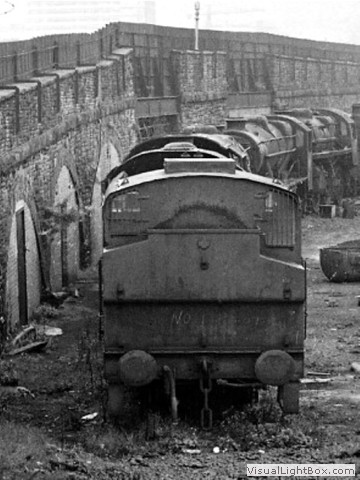 The scrapyard was massive taking about ½ a mile of the riverside between the new SDR bridge and George St bridge. Cashmores was known throughout the world as the place where ships came to die. They also broke up locomotives starting my passion for all things mechanical and I was lucky as a boy to see the last days of this shipyard. Some of the biggest ships of the Royal Navy came here to be broken up when they were too old to fight on or peace meant they were no longer needed. There, vast battleships and humble minesweepers met their end by the cutting torch and were reduced to piles of broken metal. Many great ships were taken to Cashmores at the end of the First World War. Millions had been spent on ultra-modern 'Dreadnought' battleships in the first decade of the century, but they were soon outclassed.
The scrapyard was massive taking about ½ a mile of the riverside between the new SDR bridge and George St bridge. Cashmores was known throughout the world as the place where ships came to die. They also broke up locomotives starting my passion for all things mechanical and I was lucky as a boy to see the last days of this shipyard. Some of the biggest ships of the Royal Navy came here to be broken up when they were too old to fight on or peace meant they were no longer needed. There, vast battleships and humble minesweepers met their end by the cutting torch and were reduced to piles of broken metal. Many great ships were taken to Cashmores at the end of the First World War. Millions had been spent on ultra-modern 'Dreadnought' battleships in the first decade of the century, but they were soon outclassed.
Continue now on the riverside path around Victoria wharf. Now we ride under George street bridge, opened in 1964 it was the first cable-stayed bridge in the United Kingdom and it too had to be built high to allow tall ships to pass underneath at high tide. If you wish to take a diversion from here turn left by 'Castle Bingo' and ride down 'Granville street' to the main junction. Across the road is a reproduction sign painted on the building- 'W. Jesseman & Co' manufacturers of india rubber goods. Turn right and you are on 'Lower Dock Street' to your right and left are examples of the warehouses used when the docks was in it's prime, a breath away is the old 'Customs House' where bonded goods had to be declared and tax paid on their goods. Ride past the front of George street furnishers into 'Mellon street' and you will see a faded sign of a former occupier of the premises- 'Phillips & Sons Ltd'. Brewers & Wine Merchants with stables.
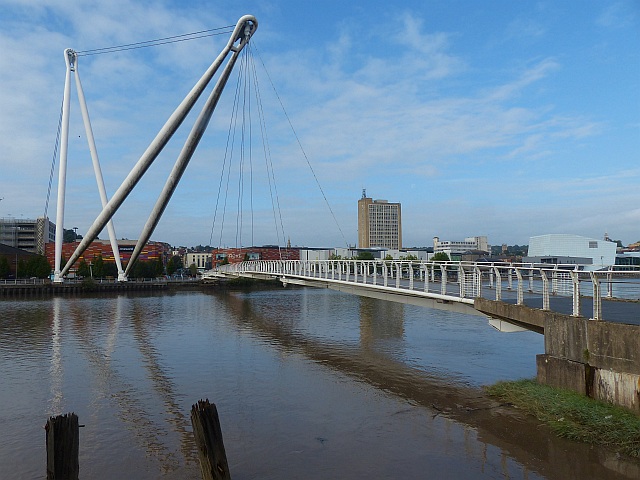 Carefully re-trace you route back to the river and ride past Newport City foot bridge, a pretty bridge, but I feel its cost of £5 million in 2006 could have been spent better. A little way on is some more recent history where there's a statue dedicated to David 'Bomber' Pierce. Time for coffee at the 'Waterfront theater' before moving on past 'the wave', another waste of money folly. So far from the transporter bridge there was 42 separate wharfs, but the passage of tides have decayed and petrified the wood to small stumps. Look away from the river and you will see a traditional Victorian indoor market, built in 1854. It's an early example of a large-span cast iron-frame building featuring a glass-filled barrel roof, worth a little peak if you've time. Turn left through the underpass to see a modern mural depicting the 'Chartist riots', sadly it's in decline and the area is affected by the modern trait of homeless people camping around the area. While there continue through the next subway to Newport castle, not the most impressive of fortifications, the east side is the only part of the castle to survive.
Carefully re-trace you route back to the river and ride past Newport City foot bridge, a pretty bridge, but I feel its cost of £5 million in 2006 could have been spent better. A little way on is some more recent history where there's a statue dedicated to David 'Bomber' Pierce. Time for coffee at the 'Waterfront theater' before moving on past 'the wave', another waste of money folly. So far from the transporter bridge there was 42 separate wharfs, but the passage of tides have decayed and petrified the wood to small stumps. Look away from the river and you will see a traditional Victorian indoor market, built in 1854. It's an early example of a large-span cast iron-frame building featuring a glass-filled barrel roof, worth a little peak if you've time. Turn left through the underpass to see a modern mural depicting the 'Chartist riots', sadly it's in decline and the area is affected by the modern trait of homeless people camping around the area. While there continue through the next subway to Newport castle, not the most impressive of fortifications, the east side is the only part of the castle to survive.
Step 2- East of the river Usk
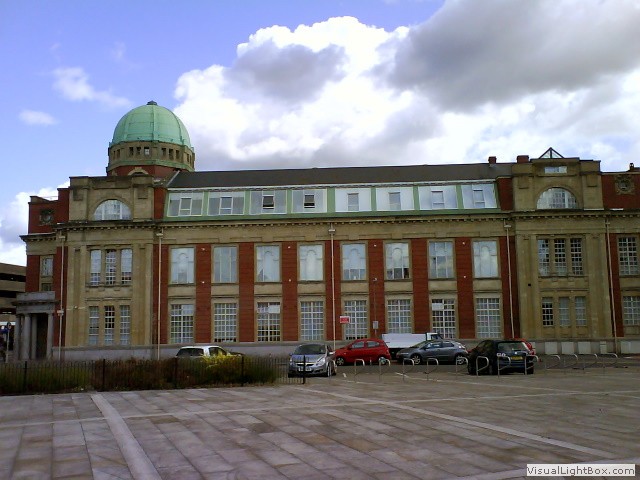 Back over Newport bridge built around 1927 (replacing an older bridge), you come across a former School of Art and Science which formed from the Newport Mechanics Institute in 1841, now converted into apartments. Look over the river bank wall you will see wooden posts in the mud near the town bridge, they are the only reminders of a great spectacle that used to grace the City- steam paddlers. This is where the graceful 'White Funnel' paddle-steamers took crowds of day-trippers across the Bristol channel. Just sit on the bike and push off, you should get you enough distance to turn left and have a look at Newport athletic club where there's remnants of Newport's first velodrome built in the late 19th c. Ride past the city pedestrian bridge and you will see a little square jutting out into the river, this was Newport Corporation East power station's water intake, your standing over a 56 feet sump, which is 4 ft. 6 in. below the level of the river bed, the power station was built in 1895 and supplied Newport's street lighting. Besides a small electrical sub-station, this all that's left when it closed in the early seventies.
Back over Newport bridge built around 1927 (replacing an older bridge), you come across a former School of Art and Science which formed from the Newport Mechanics Institute in 1841, now converted into apartments. Look over the river bank wall you will see wooden posts in the mud near the town bridge, they are the only reminders of a great spectacle that used to grace the City- steam paddlers. This is where the graceful 'White Funnel' paddle-steamers took crowds of day-trippers across the Bristol channel. Just sit on the bike and push off, you should get you enough distance to turn left and have a look at Newport athletic club where there's remnants of Newport's first velodrome built in the late 19th c. Ride past the city pedestrian bridge and you will see a little square jutting out into the river, this was Newport Corporation East power station's water intake, your standing over a 56 feet sump, which is 4 ft. 6 in. below the level of the river bed, the power station was built in 1895 and supplied Newport's street lighting. Besides a small electrical sub-station, this all that's left when it closed in the early seventies.
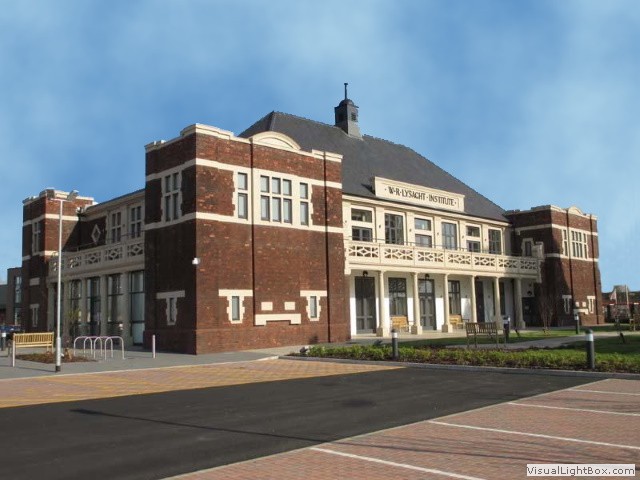 You're actually cycling on some of the branch lines as we ride under George Street bridge. Just where you turn off Argosy way onto a path that follows the river was the Usk Chemical Works, where apparently horses (it was rumoured) went after death to be rendered into glue. When the wind was in the wrong direction, Newport was treated to the pungent emissions from 'the Kem'. Follow the path now around Spytty pill and it brings you out on Corporation Road turn right and just over the road in front of you is Lysaght Institute. The 'Stute' opened its doors in December 1928 and quickly became an integral part of the local community. One of its famed attributes was a ballroom with maple wood dance floor, diagonally across from the stute is the original gates to Lysaght's works. The Orb (Lysaght's) Ironworks at Newport opened in 1898, and by 1901 most of the machinery at Wolverhampton, and many of the employees, had transferred to Newport. Now Cross the SDR bridge to complete the ride.
You're actually cycling on some of the branch lines as we ride under George Street bridge. Just where you turn off Argosy way onto a path that follows the river was the Usk Chemical Works, where apparently horses (it was rumoured) went after death to be rendered into glue. When the wind was in the wrong direction, Newport was treated to the pungent emissions from 'the Kem'. Follow the path now around Spytty pill and it brings you out on Corporation Road turn right and just over the road in front of you is Lysaght Institute. The 'Stute' opened its doors in December 1928 and quickly became an integral part of the local community. One of its famed attributes was a ballroom with maple wood dance floor, diagonally across from the stute is the original gates to Lysaght's works. The Orb (Lysaght's) Ironworks at Newport opened in 1898, and by 1901 most of the machinery at Wolverhampton, and many of the employees, had transferred to Newport. Now Cross the SDR bridge to complete the ride.
-
Gallery
 Why not have a look at the gallery relating to this ride. Click the image or the title.
Why not have a look at the gallery relating to this ride. Click the image or the title. -
Newport Transporter bridge
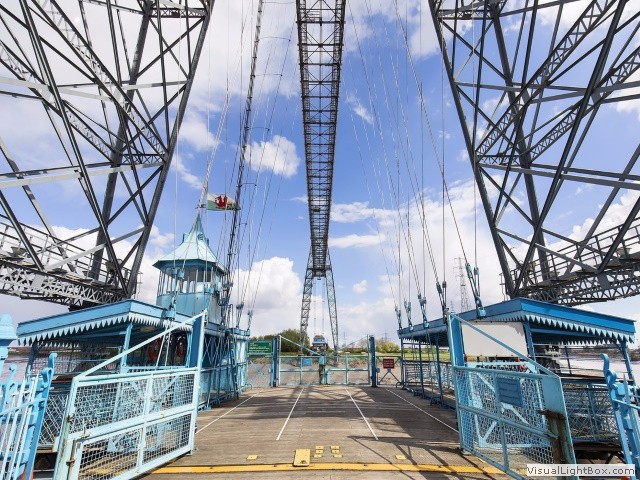 This centennial plus bridge still
runs today mostly in the summer and you can cross the gondola for a small fee (or if your feeling
brave you can walk over the 177 feet high supports). Click for larger image.
This centennial plus bridge still
runs today mostly in the summer and you can cross the gondola for a small fee (or if your feeling
brave you can walk over the 177 feet high supports). Click for larger image. -
The Old Town Dock
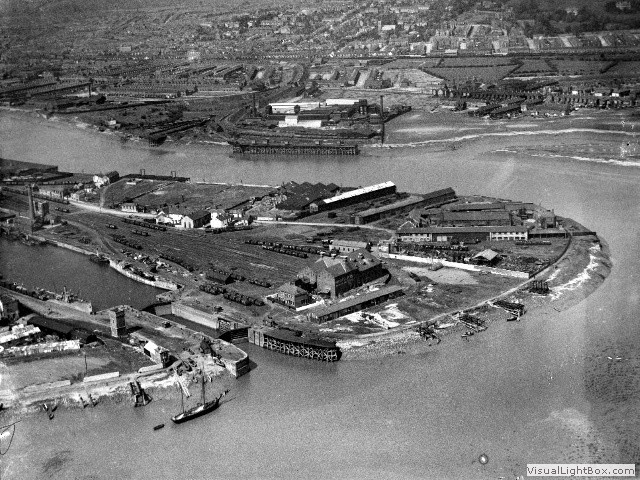 The Town Dock, opened in 1842,
celebrations continued throughout the day, included boat races on the dock and a firework
display at Rodney Wharf.
The Town Dock, opened in 1842,
celebrations continued throughout the day, included boat races on the dock and a firework
display at Rodney Wharf. -
Cashmores scrapyard
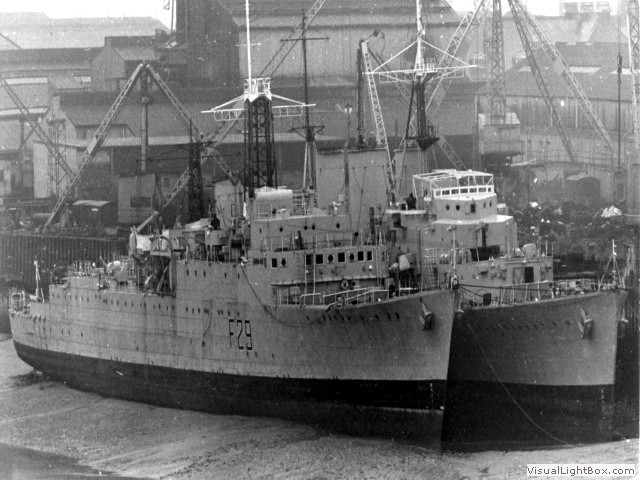 One of the largest
warships to be scrapped at Cashmores was HMS Collingwood. Launched on 7 November 1908 and completed in April
1910 she cost around £1,600,000. The ship was deemed obsolete after the war; she was reduced to the reserve
and used as a training ship before being sold for scrap in 1922.
One of the largest
warships to be scrapped at Cashmores was HMS Collingwood. Launched on 7 November 1908 and completed in April
1910 she cost around £1,600,000. The ship was deemed obsolete after the war; she was reduced to the reserve
and used as a training ship before being sold for scrap in 1922. -
Newport Co-Operative
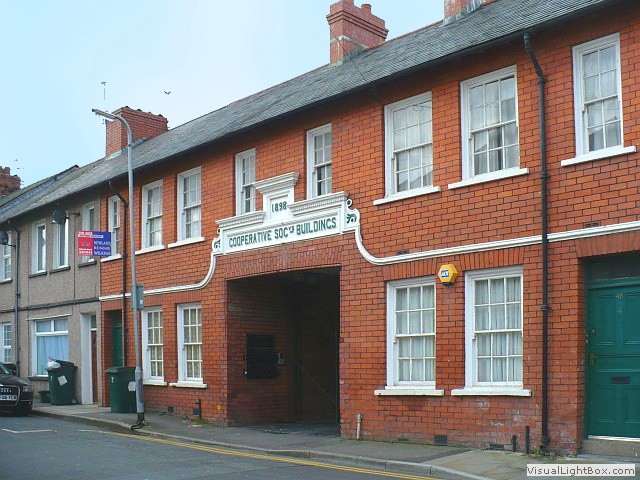 Co-operative societies gave support from the 'cradle to the grave'. Individual societies provided every sort of service that a member might want. In 1898 the Newport Co-op Society set about the erection of 5 cottages, together with new stables at the back for the accommodation of 12 horses.
Co-operative societies gave support from the 'cradle to the grave'. Individual societies provided every sort of service that a member might want. In 1898 the Newport Co-op Society set about the erection of 5 cottages, together with new stables at the back for the accommodation of 12 horses. -
David 'Bomber' Pierce
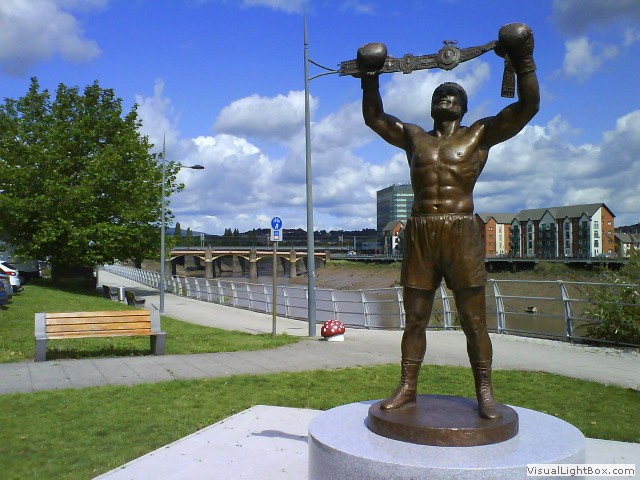 was a Newport born boxer with a well established pedigree, taking British, European and World title contender, he had to prematurely retire from boxing and died far too early in his life. Famed for using the Transporter bridge steps to train.
was a Newport born boxer with a well established pedigree, taking British, European and World title contender, he had to prematurely retire from boxing and died far too early in his life. Famed for using the Transporter bridge steps to train. -
Chartist Riots
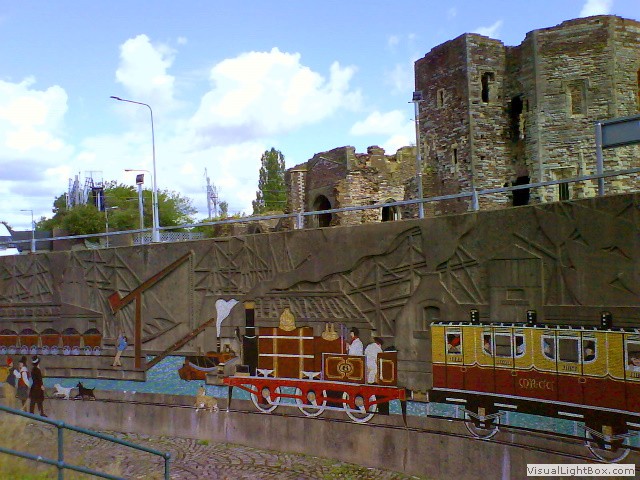 In November 1839, Newport played host to the last large-scale armed rebellion against authority in Great Britain, when nearly 10,000 Chartist sympathisers, led by John Frost invaded the town.
In November 1839, Newport played host to the last large-scale armed rebellion against authority in Great Britain, when nearly 10,000 Chartist sympathisers, led by John Frost invaded the town. -
Newport Paddle steamers
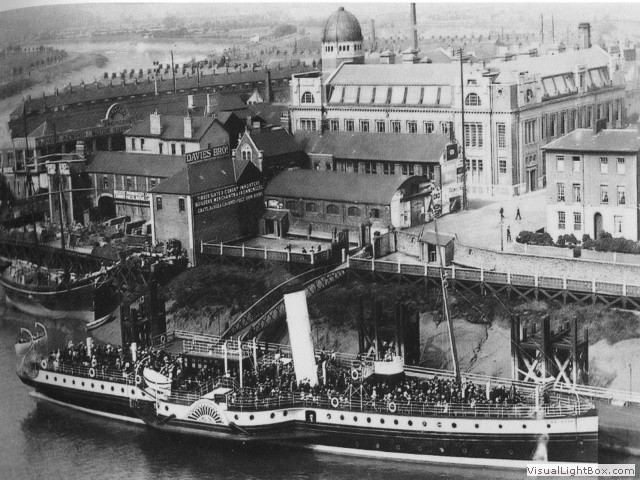 Paddle steamers used to be regular visitors to Newport and ships of P&A Campbell or the White Funnel line would often sail up the Usk as far as the town bridge if the tide was high.
Paddle steamers used to be regular visitors to Newport and ships of P&A Campbell or the White Funnel line would often sail up the Usk as far as the town bridge if the tide was high. -
W.R. Lysaght's
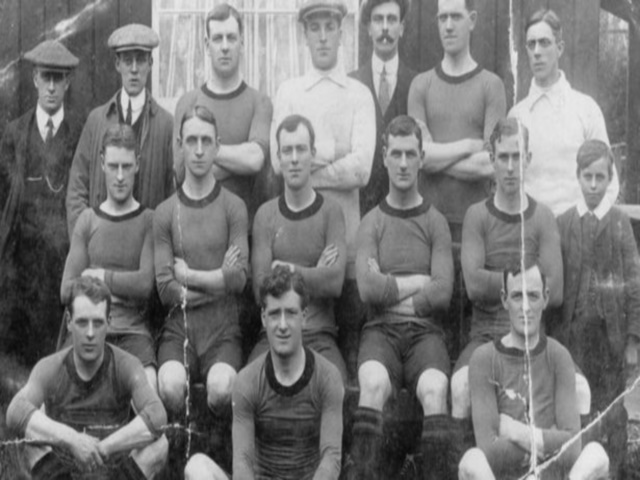 Lysaght's rolling mill opened in 1898, and as many of the employees came from Wolverhampton, Lysaght formed Newport County FC in the same colours as Wolverhampton which was basicaly a works team.
Lysaght's rolling mill opened in 1898, and as many of the employees came from Wolverhampton, Lysaght formed Newport County FC in the same colours as Wolverhampton which was basicaly a works team. -
Download gpx route from this ride.
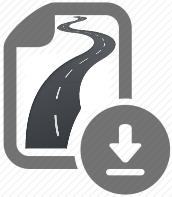 Click the road icon on the right to go to download page, click the appropriate icon and start enjoying some fantastic journeys.
Click the road icon on the right to go to download page, click the appropriate icon and start enjoying some fantastic journeys.
